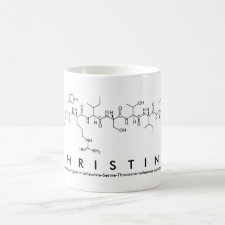
Authors: Abu-Alsoud GF, Bottaro CS
Article Title: Porous thin-film molecularly imprinted polymer device for simultaneous determination of phenol, alkylphenol and chlorophenol compounds in water.
Publication date: 2021
Journal: Talanta
Volume: 223
Article Number: 121727.
DOI: 10.1016/j.talanta.2020.121727
Alternative URL: https://www.sciencedirect.com/science/article/pii/S0039914020310183
Abstract: A porous water-compatible molecularly imprinted polymer (MIP) coating using catechol as a pseudo-template and a water-soluble functional monomer (4-vinyl benzoic acid) with ethylene glycol dimethacrylate as the crosslinker was developed for extraction of phenols from environmental water samples. The MIP devices were combined with ultra high performance liquid chromatography with a photodiode array detector (UHPLC-PDA) suitable for the simultaneous determination of trace levels of phenolic compounds with a wide range of polarities -phenol, alkylphenols and chlorophenols- in seawater and produced water. Parameters that influence extraction efficiency (salinity, pH, polymer mass, desorption solvent, and desorption time) were optimized to give method detection limits (LOD) ranging from 0.1 to 2 μg L-1 and linearity (R2>0.99) over at least three orders of magnitude for the hydrophobic phenols (e.g., 0.5-1000 μg L-1 for 2,4,6-trichlorophenol) and ~2 orders of magnitude for the light phenols (e.g., 10-120 μg L-1 for phenol, 5-120 μg L-1 for methylphenols and 2-chlorophenol, 0.5-120 μg L-1 3-methyl-4-chlorophenol and 2,4-dichlorophenol). The recoveries from authentic spiked samples ranged from 85 to 100% with %RSDs of 0.2-14% for seawater and 81-107% with %RSD of 0.1-11% for produced water. The resulting MIP-based extraction requires no pre-conditioning of the sorbent, and because the required sample size is small and sample manipulation is limited, the method is easy to multiplex for high throughput sample processing
Template and target information: catechol, dummy template, phenol, 2,4,6-trichlorophenol, methylphenols, 2-chlorophenol, 3-methyl-4-chlorophenol, 2,4-dichlorophenol
Author keywords: Thin-film molecularly imprinted polymer, MIP formulation, Environmental water samples, UHPLC-PDA, phenols



Join the Society for Molecular Imprinting

New items RSS feed
Sign-up for e-mail updates:
Choose between receiving an occasional newsletter or more frequent e-mail alerts.
Click here to go to the sign-up page.
Is your name elemental or peptidic? Enter your name and find out by clicking either of the buttons below!
Other products you may like:
 MIPdatabase
MIPdatabase









